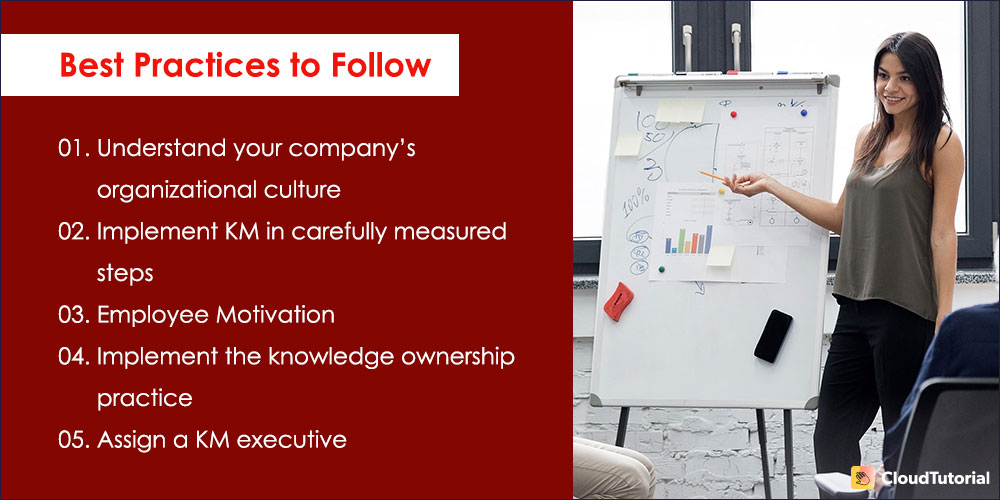Usually, people ask, ‘what are the characteristics and advantages of knowledge management systems that can benefit your organization?’
It’s not just about defining, storing, reusing, and sharing your expertise, knowledge, or information with each other in organizations. But rather it is about enhancing corporate learning, enhancing the organization’s effectiveness, and improvising communication skills.
Amongst the advantages of knowledge management system, keeping documentation updated, assisting consumers in finding answers, and administering knowledge permissions to the users, are a few to mention.
Table of Content
A knowledge management system (KMS) is a valuable tool for all company sizes: small-scale enterprises that have just begun, and global organizations that require to dispense knowledge to a wide range of audiences.
Why Do You Need a Knowledge Base?
An all-inclusive knowledge base aids customers and employees with organizing, collecting, sharing, and recovering knowledge. It can help make your business operations smooth and streamlined. Here are a few reasons that you need it:
- With the convenience and comfort offered by today’s technology, people want instant answers at their fingertips. Let’s say, you have a range of customer queries specific to your company. They can find those answers when you already have a knowledge base in place. This increases customer satisfaction level.
- Such conceptual knowledge assets reduce the hassle for your customer support team who don’t need to waste time answering generic questions. When you have a bank of knowledge on your site, it gives your entire team the needed space to handle technical issues. It also enables your customers to become self-reliant and confident about finding answers like a pro on your site.
- Another reason to have a knowledge base is it prevents customers from bouncing back to other businesses. You can also track common issues or questions so you can address them on priority. So, it turns out to be a constant resource that can be referred whenever you or your customers need.
Let’s get started with the fantastic benefits of knowledge management systems that exist within the organization.
Top 10 Benefits of Knowledge Management Systems
Let’s start our journey by understanding the core benefits of the knowledge management system that help the organization to deal with managing the knowledge or information.

1. Lower Costs
Organizations usually possess a smarter workforce, business guides, and appropriate business decisions that lead to cost-benefit and time-saving operations when incorporating knowledge management in their help desk.
It is possible by including wikis, databases, and everything related to supporting employees in a successful knowledge management program in the bottom line.
So, using appropriate knowledge management software, technologies, groundbreaking high-tech tools like expertise locators, communities, usually cuts down on the costs of centralized learning and development (L&D) and lowers the reliance on a lot of third-party training programs and events providers.
2. Improved Decision-making Power
A Knowledge Management-centered environment helps you get the premise that makes use of sound judgment by conveying pertinent sharing knowledge in a period of scarcity through the structure, search, membership, syndication, and backup services or products.
With access to knowledge management (KM) support, you get the advantage to hold up under the intensity of huge numbers, differing assessments, assess market conditions, improve product quality, resolve problem-solving ability, information overload skills, and fluctuating real-life work experience when support comes into action.
3. Easy to Find Information
At a point when confronted with work requirements — to reply to a client, take care of a range of issues, use break down patterns, survey market search, and trends, benchmark against peers, get rivalry against competitors, make new contributions, plan strategy, and techniques, or think basically.
Individuals usually search for metadata, templates, and benefits using historical conversation to help using decision-making ability for such needs.
On the off chance that it is quick and straightforward to discover what offerings they need when they need it, the individual staff or people can play out every one of these effective knowledge sharing jobs effectively.

Allow Employees To Find Vital Information in Just a Few Clicks
CloudTutorial facilitates the easy discovery of several articles with categories and sub-categories options.
4. Tracking all Ideas, Documents, and Other Data
When you build a sharing process of the complete knowledge repository, you have to guarantee that a comparable prerequisite emerges when others use it each time something different.
Tracking the essential factors is one of the most important advantages of a knowledge management system for the organization.
At the point when a specific person or individual from your association has made sense of how to take care of a typical issue, realize how to use repetitive assistance from the same workplace, or have created other items from the already available knowledge management templates.
5. Preventing Brain Drain
Once the users or employees capture your pieces of information in the knowledge management approach, there is full insurance that the workers or employees who will join the entire organization in the future will have complete access to the collective knowledge of the same information systems or knowledge management solutions.
So, no one has to deal with repeating the same everyday tasks again and again. In other words, sharing knowledge in organizations is mainly a boon for the sales, marketing, and customer service departments in multiple industries to earn a healthy profit.
6. Learning from Mistakes
There is an excellent saying by George Santayana: “Those who ignore history are doomed to repeat it.”
You will encounter them repeatedly on the off chance that you don’t learn from your slip-ups. The collective work knowledge that the administration of the support site permits you to share will help you learn from various resources and lessons, not victories and disappointments.
The potential primacies are tremendous. The best example is that if NASA learns why a space shuttle exploded, it can prevent recurrences and save lives.
7. Faster Delivery to Clients
The speed of execution is another significant factor that gives a competitive advantage. Every other thing being equivalent, organizations management that conveys sooner will win.
Data sharing, recycling, and advancement can fundamentally lessen time to convey a proposition, item, or administration to a client. What’s more that converts into expanded win rates, add-on business, problem-solving ability, capital resourceful collaboration, and networking of new clients.
8. Stimulation of Growth and Innovation
Most Fortune 500 companies need to expand their incomes. However, it turns out to be progressively troublesome as businesses develop, and competition increases.
Making new information through viable knowledge sharing methods, collaboration, creative design thinking, coordinated effort, following standard processes, and data conveyance can animate advancement.
9. Standardize Processes
The information should strictly follow as per the standard processes defined by the organizations. Such relevant information must be accurate such that any other employee can easily understand the working process of the best help desk software and be on the same page.
It is possible using the standardized documentation competencies, presentation, guides, and knowledge management process for the employees or teams to be in support of the current running scenario.
Moreover, it must follow the approved procedures; rather than getting obstructed with distorted information to benefit from each other’s details like repetitive and tactical tasks and activities.
10. Provide Better Service to Employees and Customers
Customers are God for any organization. So it becomes of prime importance to satisfy them by providing them with the best knowledge sharing service solution.
With the help of dynamic knowledge and effective knowledge management disciplines, it allows supporting teams like IT, HR, and the finance department to make use of knowledge management operations to resolve employee and customer requests quickly and correctly.
Employees can stay happy and productive, along with providing exceptional customer experiences, making contented customers more likely to purchase any items from multiple locations.
So, there were the benefits of KMS that the organization can include to enhance their business proposal or company productivity.
Knowledge Management: What are The Best Practices to Follow?

1. Understand Your Company’s Organizational Culture
It becomes a mandate to understand the corporate culture or agility just before you select one from dozens of tools.
Realization of the motivating force with successes for knowledge management technology depends on the people who operate and design them following the principle to reduce the product rework or knowledge loss in future.
The company’s personnel are essential asset management for the organization’s business requirements definition and invoke during the initiation of the knowledge management business process.
2. Implement KM in Carefully Measured Steps
The reason is that the people or teams typically do not adopt any new material changes and will take more time to select the foreign process of reinventing the wheel as they are entirely unaware of its use cases.
The system enforcement usually tends to be slow, and the measured steps decided by the organization will make dealing with change more feasible and it leads to more system failures from lessons learned.
3. Employee Motivation
Employee morale is a critical factor for the organization to enhance its market share and business growth.
The reason behind this is that they are the central pillar of the organization, and their complete guides to business strategy depend on the basis of the employee’s role no matter of size and type.
In addition, they cannot even be dismissed just because of their impressive performance.
4. Implement the Knowledge Ownership Practice
The effective way to maintain the organization’s KMS is to attach the employee name to the business knowledge results. It will eventually motivate the colleagues and team members to be hard-working specific to KM rules, and make accurate and relevant information.
Knowledge ownership is also possible to ask for clarifications or explanations from knowledge owners or employees for the complex data.

Allow Employees To Find Vital Information in Just a Few Clicks
CloudTutorial facilitates the easy discovery of several articles with categories and sub-categories options.
5. Assign a KM Executive
There exist multiple changes in an organization once we apply KM. Thus, the organization must have people who possess strong experiences, large sample sizes, and can easily handle its goals, achievements, objectives, diverse opinions, relevance records, management skills in different categories of knowledge assets, and other teamwork factors that make it the best candidate.
Knowledge management is a program or method that helps its practitioner create a network of company knowledge that allows both the employee and the customer to share lessons learned. To understand it better, you can read a blog on our website about the same topic: What is knowledge management??
There are copious benefits of knowledge culture in a company. The people who benefit from this are both the current and future employees.
- Make it easy to solve problems
- Faster decision-making process even at the smaller level
- Improve the deliveries to customers in order to scale better as per the demand and supply
- Reducing the loss of experts speakers and branches of collective knowledge
The benefits of knowledge management in an organization are better and informed decisions, improved organizational goals, increased rate of innovation, supported employee growth and development, better communication, improved business processes, sharing of specialist expertise, and quicker problem-solving.
Hope you have a clear vision of the capability and benefits of the knowledge management program for your teams or organization.
The most important benefit of types of knowledge management systems is to keep improving and changing knowledge along with the changing times and society. To know how a knowledge base helps your business to get benefits, without giving a second thought, you can explore CloudTutorial software and know its benefits.
We hope this will help you stay on the right track and keep you updated with the latest tips and tricks.
Try it out before you decide.
Create a test article NOW!
Using this tool, all you have to do is add your first test article and see how it looks. Now, you don’t have to sign-up or login into CloudTutorial software just to check how your first article appears.

